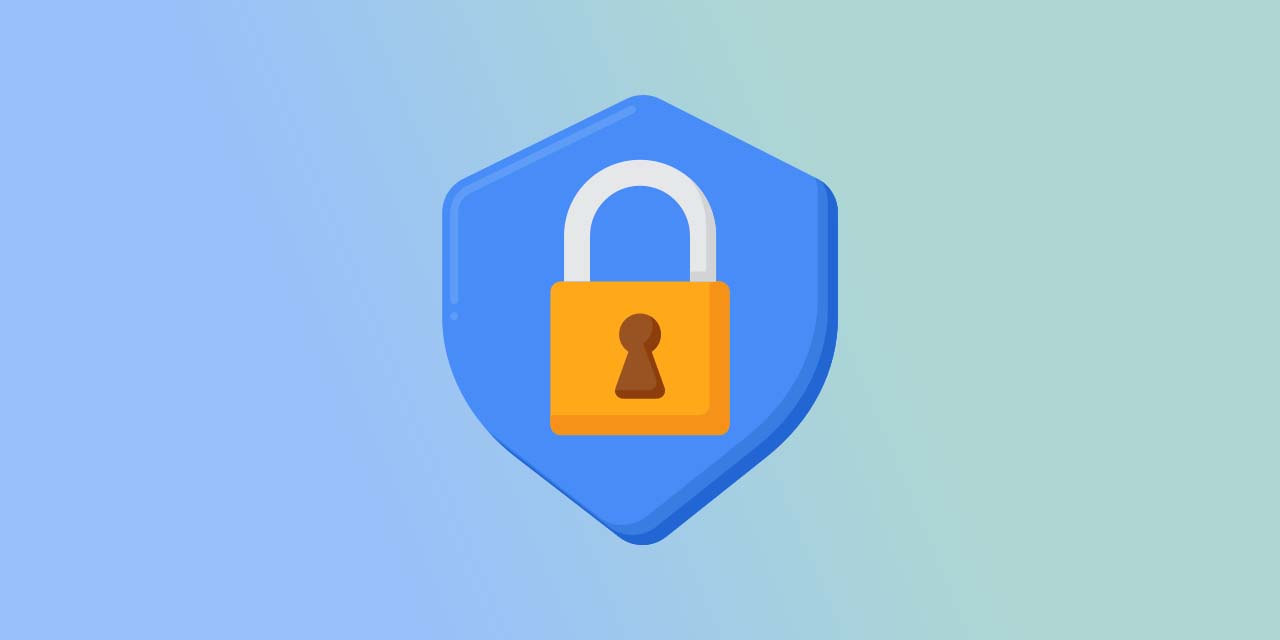3 min read
How to Balance Employee Privacy and Business Security
How do businesses strike a balance between cyber security and employee privacy? Many organisations across numerous industries use robust cyber...
12 min read
Editor 08-Feb-2024 20:46:00

In an increasingly interconnected world, local businesses are not immune to the cybersecurity challenges faced by larger organisations. An effective IT security strategy is no longer a luxury but a necessity. For small and medium-sized enterprises, the implementation of sufficient cybersecurity measures can seem daunting, yet it is crucial for protecting the business against looming digital threats. Matters such as securing confidential data, preventing unauthorised access, and safeguarding the business's online presence are integral to sustaining operations and maintaining customer trust.

Developing a robust cybersecurity strategy requires a thorough grasp of the fundamentals, and this begins with an awareness of potential threats and weaknesses within your IT environment. It is imperative for local businesses to invest in a comprehensive approach that encompasses not just technology but also the human element of security, such as employee training and a solid organisational culture that prioritises security.
Such an approach ensures the resilience of the business's digital infrastructure against a variety of cyber threats, aligns with compliance requirements, and adapts to new challenges in cybersecurity. Leveraging partnerships with strategic IT service providers can significantly enhance a local business’s security posture, offering expertise and resources that may not be available in-house.

In today's connected world, local businesses must grasp cybersecurity fundamentals to safeguard their operations. Security breaches can have significant consequences, including loss of sensitive data and intellectual property.
Cyber threats are a growing concern for local businesses as their operations become increasingly digitised. The threat landscape is dynamic, with cyberattacks ranging from phishing and malware to more sophisticated ransomware and denial-of-service attacks. These threats exploit vulnerabilities within technology systems, often targeting the most sensitive data. Several factors contribute to the expanding attack surface, including the use of mobile devices, remote work scenarios, and the Internet of Things (IoT).
================================
Grade your organisational risk with our comprehensive cybersecurity quiz.
🎯 Grade Your Organisational Risk: CLICK HERE
================================
Businesses must remain vigilant and conduct regular research to understand the latest cybersecurity risks. This includes recognising potential internal threats, such as disgruntled employees or lack of employee training, as well as external threats from hackers and cybercriminals.
Understanding key cybersecurity concepts is essential for businesses to develop robust security strategies. Here are several critical concepts:
Businesses must continuously update and reinforce their cybersecurity measures to protect against an ever-evolving array of threats. They must also ensure that they comply with data protection regulations to protect not only their own interests but also those of their clients.

To safeguard their assets, local businesses must adopt a security strategy that is both comprehensive and adaptable. Effective strategies start with a clear evaluation of the current state of security and then transition into a future-focused plan for risk management.
To create an effective cybersecurity strategy, one must initially conduct a thorough risk assessment. This process involves identifying and evaluating the risks to the business's information, technology, and operations. A comprehensive risk assessment typically includes:
By assessing their current security posture, businesses lay a foundation for a stringent security plan that addresses both known and predicted vulnerabilities.
Once the risk assessment is complete, developing a forward-looking security strategy is crucial. A strategic plan in cybersecurity should consist of:
To stay ahead, a comprehensive security strategy must also incorporate emerging threats and evolving technologies. By doing so, businesses not only protect themselves from current risks but also remain prepared for future challenges. The approach should be dynamic, incorporating regular reviews and updates to the security strategy to address new forms of risk as they arise.
When local businesses aim to protect their digital assets, it's paramount that they craft robust IT security policies. These form the backbone of a business's defence against cyber threats, ensuring employees understand their roles in safeguarding the company's information systems.
Effective security policy development begins with a clear understanding of what policies and guidelines should achieve. They are directives that outline specific security expectations and the rationale behind them. Policies must align with the business's values, culture, and regulatory requirements. They should clearly articulate the governance structure, defining who is responsible for implementing and maintaining these security policies.
Businesses should refer to frameworks like the NIST Cybersecurity Framework for principles and best practices. This framework provides a structure to help organisations:
It's crucial that these policies are not only comprehensive but also accessible. They must address everything from password creation and management to how to respond to a data breach. Guidelines, on the other hand, offer recommended actions and operational instructions to support the policies, providing clarity for ambiguous scenarios where judgement is required.
Once policies and guidelines are established, the focus shifts to implementing security procedures. These are step-by-step instructions that support the policies, showing employees the actions they must take to comply with the security expectations. To effectually implement these procedures, businesses should take the following actions:
Throughout the implementation phase, it's imperative to maintain clear communication. Any changes to procedures must be disseminated promptly, so each member of the organisation is constantly aware of their security responsibilities.
By adhering to appropriate policies and guidelines and following detailed security procedures, local businesses can create an IT security environment that is both resilient and compliant, significantly reducing their cybersecurity risk profile.
Businesses need to implement robust strategies to shield their digital assets from various threats. Ensuring the security of sensitive data and the integrity of intellectual property and hardware constitutes the backbone of a comprehensive IT security posture.
Sensitive information – from personal details of employees to customer databases – necessitates stringent security measures. It is imperative that local businesses employ multi-factor authentication to verify user access and encrypt data both at rest and in transit. Regular audits of systems and applications provide insights into potential vulnerabilities, enabling timely preventive measures. Moreover, businesses ought to foster a culture of security among staff to reinforce the safe handling of information.
The protection of intellectual property involves the meticulous management of software licences, access controls, and regular monitoring for unauthorised use. Hardware assets require physical security measures as well as vigilant software management to detect and respond to intrusions. Timely updates and patch management are critical to maintain the efficacy of security systems and software, thereby preserving the integrity of the business’s intellectual property and hardware.
In an age where data breaches are both costly and frequent, local businesses must prioritise strong access control measures. Implementing robust authentication processes and maintaining diligent password management are critical steps in safeguarding digital assets.
Multi-factor authentication (MFA) adds an essential layer of security by requiring users to provide two or more verification factors to gain access to resources. It's not just about something they know (a password), but also something they have (a security token) or something they are (biometric verification). This method significantly decreases the likelihood of unauthorised access, as obtaining multiple credentials is far more challenging for potential intruders.
Effective password management is the cornerstone of a good security posture. Businesses should enforce the creation of strong passwords which include a mix of upper and lower case letters, numbers, and special characters. Passwords should also be unique to each account, preventing a single compromise from cascading into multiple breaches.
By implementing these control measures, local businesses significantly enhance their ability to protect sensitive information against cyber threats.
Building a secure organisational culture is a critical strategy for defending a business's digital assets. A comprehensive approach includes nurturing awareness among employees and establishing protocols to address both insider and outsider threats.
Employees are the backbone of any security awareness initiative. They should be provided with continuous cybersecurity training to recognise and mitigate potential threats. It's imperative to conduct regular training sessions, accompanied by engaging materials like posters and newsletters, to keep security at the forefront of their minds.
The acknowledgment of insider threats is as vital as safeguarding against external adversaries. A multi-faceted approach often includes both technical measures and policy enforcement to minimize risks.
Cultivating a cybersecurity culture is not about a one-time implementation but involves constant engagement with every level of the organisation, from entry-level employees to top management. Only through comprehensive and consistent effort can a strong and resilient security culture be established.
Local businesses must recognise the critical need to safeguard their digital environments. Protecting client data and preventing cybersecurity mishaps are not just advisable—they are essential. This section addresses two fundamental aspects of IT security: implementing anti-malware and anti-phishing protocols, and crafting an effective response to cybersecurity incidents.
Implementing robust anti-malware solutions protects businesses from malicious software designed to infiltrate and damage computers or networks. Anti-malware programs should be kept up to date to respond to new threats as they emerge. It's not just about installing software; it's about cultivating a culture of security. Employees should be trained to recognise potential phishing attempts—fraudulent communications that aim to obtain sensitive information. Regular updates and employee training can significantly diminish the risk of malware and phishing exploits leading to data breaches.
Malware Prevention Tactics:
Phishing Mitigation Strategies:
When a cybersecurity incident occurs, a timely and organised response is crucial. Businesses should have a clearly defined plan that outlines roles, responsibilities, and procedures following an incident. In the event of a ransomware attack or data breach, having a dedicated team for incident response can ensure that the impact on the business and its customers is minimised. This team should rapidly identify the breach, contain the threat, eradicate the cause, and recover any compromised data or systems. Reporting the breach to authorities and affected parties is not only a legal requirement in many cases but also a step towards restoring trust with customers.
Businesses should ensure that these strategies are integral parts of their operational routine, thereby making the prevention of data breaches and the handling of cybersecurity incidents an everyday practice, not just an emergency response.
When local businesses prioritise their investment in cybersecurity technologies, they not only protect their assets but also reinforce customer trust. This commitment is essential in a landscape where threats are continually evolving.
Network security should be the cornerstone of a business's cybersecurity strategy. Companies are advised to implement advanced intrusion detection systems (IDS) and intrusion prevention systems (IPS). These technologies are critical in identifying and mitigating threats before they infiltrate or damage the system. Additionally, regularly updated antivirus software plays a significant role in protecting against malware that could compromise sensitive data.
Firewalls serve as the first line of defence, controlling the incoming and outgoing network traffic based on an applied rule set. Businesses should ensure their firewalls are robust and properly configured to defend against unauthorised access. Meanwhile, encryption is an indispensable tool for protecting data integrity and confidentiality. Whether data is at rest or in transit, encryption helps ensure that sensitive information remains inaccessible to unauthorised users.
By adopting these technologies, local businesses can create a formidable barrier against cyber threats and secure their position as trustworthy entities in the digital domain.
Regular security auditing and compliance are crucial for maintaining the integrity of local businesses' data and information systems. They require meticulous attention to detail and an in-depth understanding of the latest regulations and security practices.
Security audits are methodical evaluations of an organisation's information systems to ensure that they robustly protect data and assets. These audits should:
Security audits ensure that proactive measures are in place, facilitating early detection of vulnerabilities or threats.
Compliance is not just about following laws; it's about protecting stakeholders and preserving the reputation of a business. Organisations must comply with a variety of regulations, including the General Data Protection Regulation (GDPR) which mandates:
Metrics and reports produced during security auditing play a pivotal role in demonstrating compliance to regulators.
In an era of ever-evolving cyber threats, businesses must remain vigilant and proactive. The landscape of cyber risks has expanded with the rise of remote work and the acceleration of digital transformation since the pandemic.
As the pandemic necessitated a swift transition to remote work, organisations encountered new security challenges. Remote work can increase exposure to cyber-attacks due to less secure home networks and the use of personal devices. To counteract these risks, companies should implement stringent security policies that include the use of Virtual Private Networks (VPNs) and multi-factor authentication. It's also vital to provide comprehensive training to employees on the importance of maintaining cybersecurity practices outside the traditional office environment.
Additionally, the concept of Zero-Trust architecture has become crucial, ensuring that trust is never assumed, regardless of whether users are inside or outside the network perimeter. Companies need to verify every access request as if it originates from an open network and adopt a 'least privilege' approach to access control.
Digital transformation introduces both opportunities and vulnerabilities. While businesses streamline processes and improve efficiency through new technologies, they must also manage the risks associated with these advancements. The phenomenon known as Shadow IT, where employees use unofficial software or devices, creates significant security blind spots. Organisations should establish governance policies and embrace solutions that offer visibility into all IT assets.
Companies should continuously assess their cybersecurity posture and adapt their strategies to protect against a diverse range of cyber threats. Investing in regularly updated firewalls, intrusion detection systems, and endpoint protection is imperative. Meanwhile, conducting regular security audits can help identify vulnerabilities before they are exploited. By integrating these technologies and policies, businesses can secure their digital transformation initiatives and resist the tide of cyber threats.
Local businesses can enhance their cybersecurity posture significantly by strategically collaborating with external experts and outsourcing key functions.
For many small to medium-sized enterprises, having in-house security professionals, such as a security architect or CISO, may not be feasible due to budget and resource constraints. By partnering with security experts, companies can access specialised knowledge and stay abreast of the latest threats and defence mechanisms. These partnerships provide valuable insights tailored to the unique needs of the business, allowing for a more robust security infrastructure built on expert recommendations.
Outsourcing IT security to Managed Service Providers (MSPs) is a practical approach for businesses to extend their IT department capabilities without incurring the costs of full-time staff. MSPs offer comprehensive security solutions that range from routine monitoring to advanced threat detection and response. This allows businesses to focus on their core operations while ensuring that their customers' data is protected by professionals dedicated to mitigating risks. Through outsourcing, companies leverage the MSP's resources and expertise to strengthen their security posture, making it a cost-effective solution for safeguarding against cyber threats.
Grade your organisational risk with our comprehensive cybersecurity quiz.
🎯 Grade Your Organisational Risk: CLICK HERE
================================
Our quiz is more than just a set of questions; it's a window into your organisation's cybersecurity posture. By participating, you're not just testing your knowledge; you're evaluating your organisation's readiness against cyber threats.
As your trusted MSP, we're committed to helping you navigate the complex world of cybersecurity. This quiz is the first step in a journey towards a more secure digital environment for your business.
Take the Quiz Now and pave the way for a safer digital future for your organisation. Remember, in the realm of cybersecurity, knowledge is not just power – it's protection.

3 min read
How do businesses strike a balance between cyber security and employee privacy? Many organisations across numerous industries use robust cyber...

3 min read
What is an IT strategic plan? An IT strategic plan is a document that sets out an organisation's technology-related goals and objectives and how it...
7 min read
As businesses across the UK continue integrating digital operations into every facet of their work, cybersecurity breaches have become an...